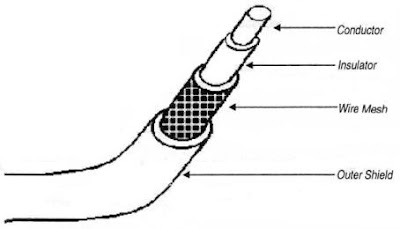In a LAN, the words communication channel mean connecting cables. The connecting cables are the life- lines of a LAN. Snap a line in any part of the LAN, and at least a part of the LAN will become inoperational. While installing a LAN in any office or factory, attention has to be given to the manner in which these wires are laid out. Care has to be taken that the layout of these wires is such that they are provided with maximum protection, and cause minimum inconvenience to the movement of employees.
The quality and performance of LAN cables has improved over time with the improvement in technology.
Let us take a look at some of the communication channels.
Twisted-pair Cables
The oldest and least expensive type of cables used for LANs are the twisted-pair cables. These cables consist of two insulated copper wires twisted around each other (refer Figure 1.1). These cables are also used for short and medium range telephone communication.
Twisted-pair Cables
Co-axial Cables
A co-axial cable consists of one or more small cables in a protective covering (refer Figure 1.2). These are more expensive than twisted-pair cables but perform better.
Co-axial Cables
Fiber-optic Cables
Fiber-optic cables are made of plastic or glass and are as thin as a human hair. These cables are highly durable and offer excellent performance. Their speed of transmission is very high. However, they are expensive and are still not widely used in LAN installations.


